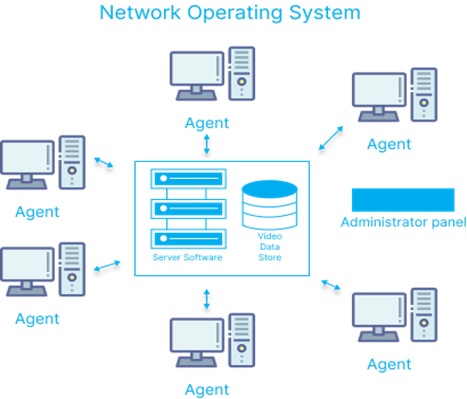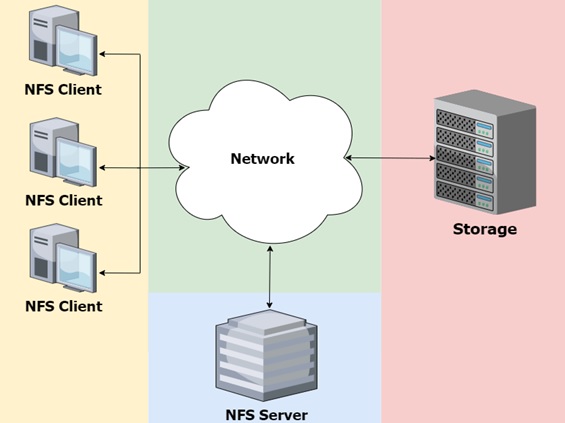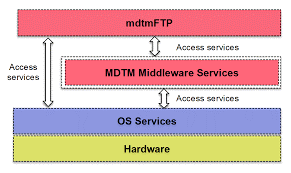Network Operating Systems (NOS)
A Network Operating System (NOS) is a specialized operating system designed to manage and operate a computer network. NOS is responsible for providing network services such as file sharing, printing, security, administration, and other functions that are required to manage and operate a network. NOS is an essential component of any computer network, and it provides the underlying framework for managing network resources and services.

Figure 1. Network Operating Systems (NOS)
Figure 1 shows Network Operating Systems (NOS). Following are the main functions of NOS:
- Creating and managing user accounts on the network.
- Controlling access to resources on the network.
- Provide communication services between the devices on the network.
- Monitor and troubleshoot the network.
- Configuring and managing the resources on the network.
There are mainly two types of networks, one is peer to peer and another is client/server. Now let’s see each type one by one.
Peer to Peer
Peer-to-peer network operating systems allow sharing resources and files with small-sized networks and having fewer resources. In general, peer-to-peer network operating systems are used on LAN.
Client/server
Client-server network operating systems provide users access to resources through the central server. This NOS is too expensive to implement and maintain. This operating system is good for the big networks which provide many services.
Some common features of network operating systems include:
- File and print services: NOS provides the ability to share files and printers across the network. This allows users to access resources from any device connected to the network.
- User and group administration: NOS provides the ability to create and manage user accounts and groups, and set permissions to control access to network resources.
- Directory services: NOS provides directory services to enable centralized management of network resources, such as user accounts, printers, and files.
- Security services: NOS provides security features such as authentication, access control, and encryption to protect network resources from unauthorized access.
- Remote access services: NOS provides the ability to access network resources remotely, such as through a VPN connection.
- Network monitoring and management: NOS provides tools for monitoring and managing network performance and utilization, such as bandwidth management and network traffic analysis.
Some examples of network operating systems include Microsoft Windows Server, Linux-based systems such as Ubuntu Server and Red Hat Enterprise Linux, and Novell NetWare.
Network operating systems play a critical role in managing and operating computer networks, and they provide the foundation for many network services and applications. As such, selecting the right network operating system is an important decision that can have a significant impact on network performance, security, and reliability.
References:
- https://www.prepbytes.com/blog/operating-system/network-operating-system/
- https://www.geeksforgeeks.org/what-is-a-network-operating-system/
Cite this article:
Hana M (2023), Network Operating Systems (NOS), AnaTechMaz, pp.107















